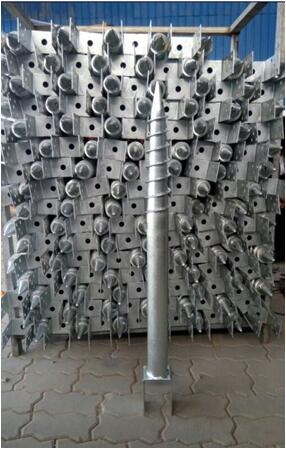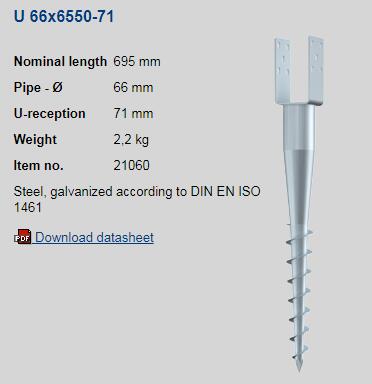The L1 Compact design is simpler and easier to use than the L1 Model II system. The integration is more user-friendly and the user interface is user-friendly. Even non-professional audio personnel can easily install, adjust and use the system. It is suitable for general venues. Sound reinforcement application.
The L1 Model II is a high-end product in the L1 series. It has richer sound performance, greater sound pressure level, longer throw distance and more professional design. It is suitable for use in demanding live performance venues or large venues.
2. Considering how small the volume is compared to other L1 systems, how does the L1® Compact system perform over the sound propagation distance?
The sound quality coverage of the L1 Compact speaker array in the horizontal plane is very similar to the larger L1 Model II system. Compared with the L1 Compact system, the L1 Model II system has a longer speaker array, which makes the sound travel farther and the sound pressure level is slower. It is suitable for use in demanding professional live performance venues or large venues.
3. Does the howling occur when the sound is amplified using the L1® Compact system?
Thanks to Bose's unique Spatial DispersionTM spatial diffused speaker technology and targeted system signal processing, the sound coverage of the L1 Compact system is very uniform, even if the speaker (or performer) is standing in front of the speaker (the distance to maintain normal use) The system can also effectively suppress howling, making speeches and performances more free.
4. Can the L1® Compact system be used with the L1® Model II system?
can. All L1 systems can be used together. Compared to the L1 Compact system, the L1 Model II system has a longer speaker array, which allows the sound to travel farther and the sound pressure level to decay more slowly.
5. What are the advantages of the integrated ToneMatch® processing system for the L1® Compact system?
Imagine if an experienced engineer is listening to your microphone or the original guitar sound with the L1 Compact system, then performing a series of equalization settings, optimizing the sound quality, and finally saving it as a preset, you only need to The current environment brings up the optimal settings with a single click... this is the power of the ToneMatch® signal processing system.
• Channel I – The microphone input features a ToneMatch preset optimized for handheld dynamic microphones. Simply plug in the dynamic microphone to automatically enable the preset.
• Channel II – A ToneMatch preset optimized for the original guitar. Connect the original guitar to the 1/4" input and place the toggle in the "Acoustic Guitar ToneMatch" position (up position) to enable the preset.
Note: This switch only enables the ToneMatch preset for the original guitar; it does not work for other sources connected to Channel II.
1. What is the main difference between the L1® Compact system and the L1® Model II system?
The L1 Compact design is simpler and easier to use than the L1 Model II system. The integration is more user-friendly and the user interface is user-friendly. Even non-professional audio personnel can easily install, adjust and use the system. It is suitable for general venues. Sound reinforcement application.
The L1 Model II is a high-end product in the L1 series. It has richer sound performance, greater sound pressure level, longer throw distance and more professional design. It is suitable for use in demanding live performance venues or large venues.
2. Considering how small the volume is compared to other L1 systems, how does the L1® Compact system perform over the sound propagation distance?
The sound quality coverage of the L1 Compact speaker array in the horizontal plane is very similar to the larger L1 Model II system. Compared with the L1 Compact system, the L1 Model II system has a longer speaker array, which makes the sound travel farther and the sound pressure level is slower. It is suitable for use in demanding professional live performance venues or large venues.
3. Does the howling occur when the sound is amplified using the L1® Compact system?
Thanks to Bose's unique Spatial DispersionTM spatial diffused speaker technology and targeted system signal processing, the sound coverage of the L1 Compact system is very uniform, even if the speaker (or performer) is standing in front of the speaker (the distance to maintain normal use) The system can also effectively suppress howling, making speeches and performances more free.
4. Can the L1® Compact system be used with the L1® Model II system?
can. All L1 systems can be used together. Compared to the L1 Compact system, the L1 Model II system has a longer speaker array, which allows the sound to travel farther and the sound pressure level to decay more slowly.
5. What are the advantages of the integrated ToneMatch® processing system for the L1® Compact system?
Imagine if an experienced engineer is listening to your microphone or the original guitar sound with the L1 Compact system, then performing a series of equalization settings, optimizing the sound quality, and finally saving it as a preset, you only need to The current environment brings up the optimal settings with a single click... this is the power of the ToneMatch® signal processing system.
• Channel I – The microphone input features a ToneMatch preset optimized for handheld dynamic microphones. Simply plug in the dynamic microphone to automatically enable the preset.
• Channel II – A ToneMatch preset optimized for the original guitar. Connect the original guitar to the 1/4" input and place the toggle in the "Acoustic Guitar ToneMatch" position (up position) to enable the preset.
Note: This switch only enables the ToneMatch preset for the original guitar; it does not work for other sources connected to Channel II.
1. What is the main difference between the L1® Compact system and the L1® Model II system?
The L1 Compact design is simpler and easier to use than the L1 Model II system. The integration is more user-friendly and the user interface is user-friendly. Even non-professional audio personnel can easily install, adjust and use the system. It is suitable for general venues. Sound reinforcement application.
The L1 Model II is a high-end product in the L1 series. It has richer sound performance, greater sound pressure level, longer throw distance and more professional design. It is suitable for use in demanding live performance venues or large venues.
2. Considering how small the volume is compared to other L1 systems, how does the L1® Compact system perform over the sound propagation distance?
The sound quality coverage of the L1 Compact speaker array in the horizontal plane is very similar to the larger L1 Model II system. Compared with the L1 Compact system, the L1 Model II system has a longer speaker array, which makes the sound travel farther and the sound pressure level is slower. It is suitable for use in demanding professional live performance venues or large venues.
3. Does the howling occur when the sound is amplified using the L1® Compact system?
Thanks to Bose's unique Spatial DispersionTM spatial diffused speaker technology and targeted system signal processing, the sound coverage of the L1 Compact system is very uniform, even if the speaker (or performer) is standing in front of the speaker (the distance to maintain normal use) The system can also effectively suppress howling, making speeches and performances more free.
4. Can the L1® Compact system be used with the L1® Model II system?
can. All L1 systems can be used together. Compared to the L1 Compact system, the L1 Model II system has a longer speaker array, which allows the sound to travel farther and the sound pressure level to decay more slowly.
5. What are the advantages of the integrated ToneMatch® processing system for the L1® Compact system?
Imagine if an experienced engineer is listening to your microphone or the original guitar sound with the L1 Compact system, then performing a series of equalization settings, optimizing the sound quality, and finally saving it as a preset, you only need to The current environment brings up the optimal settings with a single click... this is the power of the ToneMatch® signal processing system.
• Channel I – The microphone input features a ToneMatch preset optimized for handheld dynamic microphones. Simply plug in the dynamic microphone to automatically enable the preset.
• Channel II – A ToneMatch preset optimized for the original guitar. Connect the original guitar to the 1/4" input and place the toggle in the "Acoustic Guitar ToneMatch" position (up position) to enable the preset.
Note: This switch only enables the ToneMatch preset for the original guitar; it does not work for other sources connected to Channel II.
U Ground Screw :
Abnormal shape Ground screw including many kinds of designs ,which are not same as standard design of ground screw with nut or flange ,usually add some special assist parts ,or special design of ground screw .
Materlal of hot dip galvanized ground screw :Q235 carbon steel
Diameter of pipe : 48 mm,60 mm,68 mm,76 mm,89 mm,114 mm
Length of ground screw : 550-6000 mm
Thickness of pile : 2.50-4.0 mm
Surface treatment : Hot dip galvanized,DIN EN ISO 1461-1999,thickness of coating :more than 80micron
Mainly including : no pipe-ground screw, field ground screw ,no-pipe ground screw with nut ,flange ground screw double flange pile ,twist pile ground screw,ground anchor screw,screw pile,galvanizing ground screw
Usage : Farm or garden fence,tent,solar energy system ,PV Mounting ,advertising board or banner ,simple house &


U Type Ground Screw,U Type Fence Post Anchor,U Shape Ground Screw,Ground Anchor
BAODING JIMAOTONG IMPORT AND EXPORT CO., LTD , https://www.chinagroundscrew.com